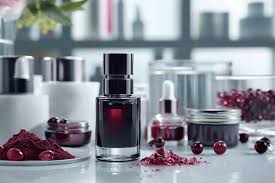
Can You Mix Retinol and Azelaic Acid Together?
Azelaic acid and retinol are two highly effective skincare ingredients, each offering distinct yet impressive results.
Both are well-known for their ability to improve skin texture, reduce blemishes, and brighten the complexion.
But can they be used together? If you’re already familiar with the benefits of retinol, you’re aware of its power to improve the skin’s overall appearance.
Retinol is celebrated for its ability to diminish the look of fine lines, wrinkles, and acne breakouts.
On the other hand, azelaic acid is a gentler alternative that can be beneficial for sensitive or rosacea-prone skin, providing similar results.
Given that both ingredients offer so much, it’s no surprise that skincare enthusiasts often ask whether they can be combined.
So, let’s take a closer look at whether you can mix retinol and azelaic acid in your skincare routine and how they benefit the skin.
What Are the Benefits of Azelaic Acid?
Azelaic acid is a versatile ingredient that works wonders for various skin concerns. Here are some key benefits:
Reduces Inflammation: Azelaic acid has anti-inflammatory properties that can help calm irritated skin. This makes it an excellent choice for people with acne-prone or sensitive skin.
Fights Bacteria: Azelaic acid contains antibacterial agents that help clear out dirt, bacteria, and excess sebum from the pores, preventing the formation of breakouts.
Improves Hyperpigmentation: One of its standout benefits is its ability to reduce the appearance of dark spots, sun damage, and post-acne scars. It’s particularly effective for evening out skin tone.
Provides Mild Exfoliation: Azelaic acid gently sloughs off dead skin cells, leaving the skin with a smoother, more even texture.
It offers a milder exfoliation than other acids, making it suitable for sensitive skin.
UV Protection: Azelaic acid does not increase the skin’s sensitivity to UV exposure, unlike some exfoliating acids. This makes it a safer option for daily use without the risk of sunburn.
If you want to dive deeper into how azelaic acid benefits the skin, check out our dedicated blog post about it on The Beauty Insiders.
What Are the Benefits of Retinol?
Retinol is another powerhouse ingredient that targets a variety of skin concerns. Here are some of its most popular benefits:
Prevents and Treats Acne: Retinol is effective in combating acne, reducing the size of pores, and preventing breakouts. It helps clear blocked pores, which are a primary cause of acne.
Boosts Collagen Production: Retinol works deep within the skin, stimulating collagen and elastin production. This is vital for maintaining skin elasticity and youthful firmness.
Reduces Hyperpigmentation: Like azelaic acid, retinol also speeds up skin cell turnover, helping to fade dark spots, sun damage, and acne scars more quickly.
Improves Fine Lines and Wrinkles: Retinol’s ability to speed up cell turnover also helps reduce the appearance of fine lines and wrinkles, promoting smoother, more youthful skin.
For more information on how retinol works and why it’s a must-have in your skincare routine, you can read our blog post What Are the Skincare Benefits of Retinol?
Can You Use Retinol with Azelaic Acid?
The short answer is: Yes, you can mix retinol and azelaic acid! However, if you have sensitive skin, you should proceed with caution.
Over-exfoliating or layering too many potent ingredients can irritate the skin.
If you have oily and acne-prone skin, the combination of both ingredients can be incredibly effective. Azelaic acid helps fade hyperpigmentation, including dark spots left by acne.
Meanwhile, retinol works by unclogging pores and preventing new blemishes from forming, making it a great addition for those prone to acne.
Using both ingredients in tandem can result in smoother, clearer, and more even skin. Azelaic acid helps to calm the skin, while retinol targets the deeper layers of the skin for a more thorough treatment.
Together, they offer a powerful solution for treating acne and reducing pigmentation.
That said, always remember that both azelaic acid and retinol can make your skin more susceptible to UV damage.
Applying a broad-spectrum sunscreen of SPF 30 or higher every morning is essential to protect your skin from harmful sun rays.
What Goes First: Azelaic Acid or Retinol?
The order in which you apply your skincare products is crucial to getting the best results.
The general rule of thumb is to apply products with the thinnest consistency first, and then layer thicker products on top.
Azelaic acid is commonly found in exfoliating toners, serums, or face washes. These products are typically applied during the earlier stages of your skincare routine.
On the other hand, retinol is usually found in thicker products like serums, oils, and moisturizers, which are applied later in your routine.
For a straightforward application, consider this: since retinol should be used at night, you can apply it directly to your cleansed skin before bedtime.
Azelaic acid, with its exfoliating properties, is usually best used in the morning or at an earlier stage in your routine to prep the skin.
By using azelaic acid first, it helps to gently exfoliate the skin, removing dead skin cells and debris.
This process makes the skin more receptive to other products you apply afterward, such as retinol. So, it’s a good idea to apply azelaic acid first and follow up with retinol later in the evening.
Can I Use Niacinamide, Azelaic Acid, and Retinol Together?
Yes, you can use all three ingredients in your skincare routine, but not all at once. Using them together in one application can be too much for some skin types, leading to irritation.
Niacinamide, a soothing and hydrating ingredient, pairs well with retinol. It can counteract retinol’s drying effects by boosting hydration and improving the skin’s moisture barrier.
This makes niacinamide an excellent choice for people who find retinol too drying on its own.
To incorporate all three ingredients effectively, it’s best to alternate their use. You can use an exfoliating toner with azelaic acid in the morning after cleansing.
Then, in the evening, apply niacinamide followed by retinol. This method ensures that enough time has passed between the products, allowing your skin to adjust and benefit from each one.
Is Azelaic Acid Better Than Retinol?
Azelaic acid and retinol each offer distinct benefits, and neither is necessarily “better” than the other.
They perform similar functions—improving skin texture, reducing pigmentation, and treating acne—but each has its own unique properties.
Azelaic acid is gentler and more suitable for sensitive skin, while retinol is more potent and works at a deeper level.
For those with sensitive skin or conditions like rosacea, azelaic acid may be a better choice.
However, for those looking for more intense anti-aging or acne treatment, retinol can provide stronger results.
Many people find that using both ingredients in their routine yields the best results.
If your skin can tolerate it, combining azelaic acid and retinol can give you the benefits of both—improving clarity, texture, and overall skin health.
And remember, always wear sunscreen during the day to protect your skin from UV damage, especially when using these potent ingredients.
Conclusion
In conclusion, azelaic acid and retinol can be used together, but it’s important to apply them in the right order and be mindful of your skin’s sensitivity.
While both ingredients offer impressive benefits, they work best when incorporated into your routine thoughtfully.
Always remember to protect your skin with sunscreen, especially when using potent ingredients like retinol.
If you have any more questions or need personalized advice, feel free to reach out to us on Instagram.


